In this Engineer Spotlight, we’re
talking to Rich Reavis, Black Box VR’s Director of Engineering, about VR
hardware, system requirements, and the future of VR applications.
While VR/AR/MR are growing in popularity across the board, especially in gaming, they've also found a natural home in the realm of fitness. Developers have begun taking advantage of VR hardware's growing accessibility and combining it with the creativity of VR world-building to produce a whole new industry for health and wellness.
While some companies are incorporating stationary bikes and treadmills into virtual reality experiences, Black Box VR is taking it to the next level. In Director of Engineering Rich Reavis’ own words, BBVR is “gamifying fitness,” creating a unique experience where users don headsets, grab their hands-free motion controllers, and prepare for a resistance-training session from another dimension.
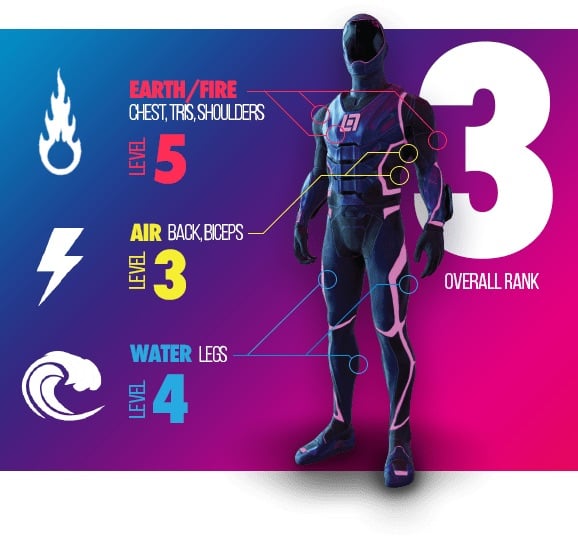
Each muscle group is assigned an element, so if a player is fighting a Fire Hawk, a water attack with a squat should do the trick. Image courtesy of Black Box VR.
Winning the Best of CES 2018 Best Startup award and landing spots as a finalist for Best Sports Tech, Best Fitness Product, and People’s Choice, Black Box VR’s gamified workout touts immersive gameplay where the user controls units on their team, as well as their own character, to defeat opposing units, break down enemy gates along their way, and eventually destroy the opposing tower. The game also works elemental attacks, each correlating with a specific family of exercises, that the player can use to optimize their damage—and get a varied workout.
But beneath it all lies intricate hardware that Reavis helped develop during his time at BBVR.
Reavis worked for businesses like AWI and Pharmer Engineering as a product development and business development engineer for several years after graduating from Boise State University with his bachelor’s degree in mechanical engineering. He then joined Black Box VR as an ME/EE in August of 2017 before becoming the company’s director of engineering and hardware systems in December of the same year.
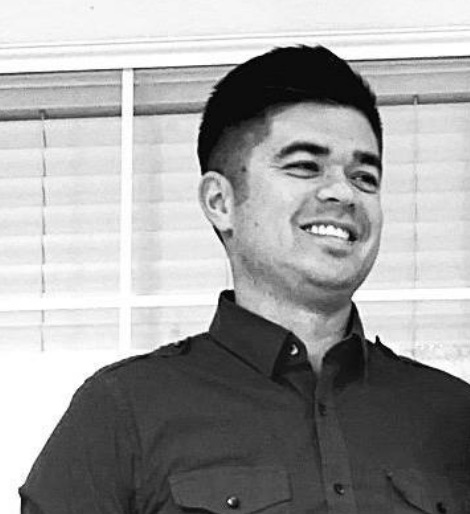
Director of Engineering Rich Reavis has been a member of the Idaho Virtual Reality Council for the past 10 months. Image courtesy of Black Box VR.
All About Circuits had the pleasure of talking with Reavis about BBVR’s latest initiatives and exploring how he was able to develop this technology and integrate it with an industry that often isn’t associated with virtual reality to begin with.
All About Circuits (AAC): Why do you believe VR will thrive in the realm of fitness?
Rich Reavis (RR): We believe adherence is the key to any successful fitness program. As video games have proven to be addictive and sustaining, the goal is to harness those qualities in a physically beneficial outlet. VR has the ability to create high-level immersive environments which people can interact with on a very personal level, whether it is a game-based or experience-based interaction.
With AR/VR, there are no bounds to what someone could experience—whether it be a game-based competition, or experience-based event. Imagine hiking in the Alps or playing basketball against Lebron James.
There will most likely be a mixture of VR and AR to facilitate the most high-fidelity experiences—as the technology improves, so will the offerings from developers in both software and hardware.
With AR/VR, there are no bounds to what someone could experience... Imagine hiking in the Alps or playing basketball against Lebron James.
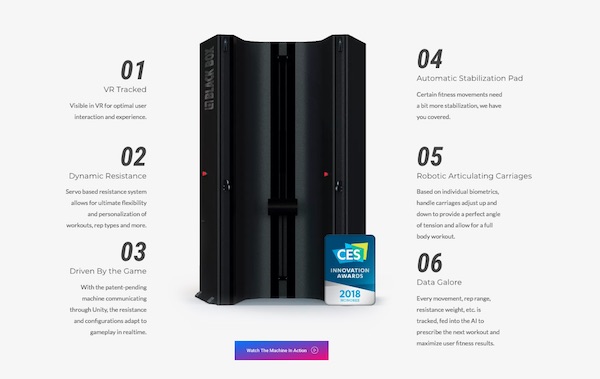
BBVR's Dynamic Resistance Machine sports a variety of features. All images courtesy of Black Box VR.
AAC: What can you tell me about Black Box's hardware?
RR: I could talk all day about the capabilities of our hardware, but here are the highlights: Our resistance machine is completely customizable to each user, containing the necessary mechatronics and software to adjust itself depending upon the individual's body type and the resistance exercise selected within the game. This means that there is a machine-learning algorithm which crunches a lot of data to ensure the handles and stabilization pad are positioned correctly for your height and reach.
As for some specific details, the cable handles can automatically move from 2 inches above ground level to about 76 inches off the floor, accommodating a wide range of moves seen on traditional cable machines in any gym. There is also a stabilization pad that automatically extends for moves such as chest press or standing row which require a bit more support during the move. Weight can be changed instantaneously within our system, ranging from 10 pounds to as high as 125 pounds per handle, providing adequate resistance for many ability levels.
AAC: What makes your hands-free motion controllers and resistance machines unique in the grand scheme of VR design?
RR: Our hands-free motion controllers are just that—hands-free—and they track your motion within VR. It sounds simple enough, but this is a very important, unique aspect of our system. As far as we are aware, we were the first company to produce such devices, as it is imperative that a user’s hands be free to grab handles and complete a workout.
A major part of our offering is teaching and encouraging proper form. The only way we can determine the user’s biomechanics within the experience is by form-tracking, provided by monitoring points within the headset and the two arm motion controllers. We have plans to develop or integrate controllers for the lower body as we expand our software.
The internal design of our controllers is relatively open-sourced technology, based off the hardware development kit provided by SteamVR. This kit is readily available and provided exclusively by Triad Semiconductor.
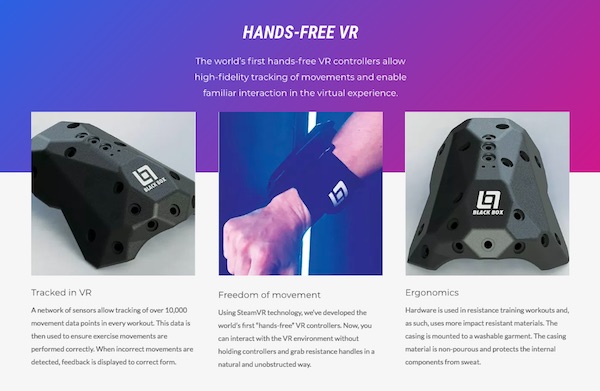
BBVR's hands-free motion controllers are the first of their kind. Image courtesy of Black Box VR.
AAC: What challenges or surprises might other engineers look forward to when working with the SteamVR HDK?
RR: It’s always exciting when an open-sourced technology hits the market. So many opportunities exist when talented, creative individuals are given the opportunity to tinker and explore. On the flip side, as a new technology, there are bound to be bugs and highly limiting roadblocks.
Engineers have a great head start with the SteamVR HDK since the design files and component kits are available, allowing those interested to create their first VR-tracked devices in a relatively short time frame. As new firmware and SDKs are released, it should improve the technology as a whole and allow more people/engineers to build upon what’s already available.
The big development that’s next on the horizon is the Steam VR tracking 2.0 and, of course, wireless headsets. With 2.0 tracking, the promise is there will be support for more than two base stations per HMD, effectively increasing the coverage area (meaning fewer sensors required on peripheral devices, less power consumed, and better tracking). Larger coverage areas correlate to larger play areas, allowing users to interact on a much grander scale than they are currently used to. Wireless headsets? Enough said… this will be a game changer for all involved with VR.
AAC: Are your headsets designed by Black Box as well?
RR: No, we utilize headsets available on the open market. This technology is already viable and stable in its current form, so there is no need for us to try to compete in this space, as the HMDs available are functional for our purposes.
AAC: What were some of the main challenges or hurdles the Black Box team faced when designing this hardware?
RR: This could be an extremely lengthy response, interlaced with outbursts of tears and hysterical laughter (i.e., an emotional rollercoaster). As with any new product (especially a highly sophisticated engineering product) there exists unforeseen situations, many of which seem almost trivial in retrospect, but they were catastrophic at the time. My two favorite sayings since joining BBVR and tackling this new frontier are:
- “You don’t know what you don’t know,” and
- “It’s never a problem, until it is.”
When combining multiple new products and industries, there are bound to be surprises.
Just speaking to EEs about our main challenges, there have been several stages with both the machine and motion controllers. For the machine, there was a very stressful period involving signal noise interference between the automation system and VR devices. Many high-frequency devices are interacting with each other within a complex network, which can make it difficult to pinpoint the source(s) of noise. If any of you have dealt with noise issues on any type of project, you can probably relate.
Beyond reevaluating component spec sheets and leaning on manufacturers, the best practice is to start eliminating potential culprits one at a time. This is an important debugging and troubleshooting protocol, though it is not always possible when factoring the project schedule.
A piece of advice: Always allow adequate time for programming and debugging when commissioning a system or product. It will always take longer than you think. Most often, you will not have a lot of time for this piece of the design process. Just make sure to document and archive your findings. Too often, these same or similar issues rear their ugly heads, and you could waste valuable time solving the same problem multiple times.
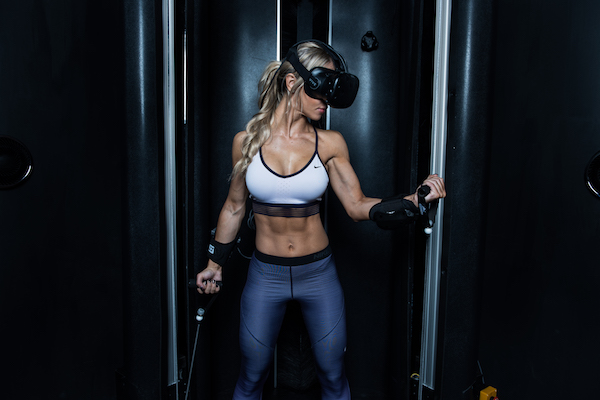
BBVR claims that their workouts will "increase muscle, decrease body fat, build strength, increase cardiovascular endurance, and improve overall health and longevity." Image courtesy of Black Box VR.
AAC: Is there anything else related to BBVR's hardware that you think would be especially interesting to our electrical engineering audience?
RR: From an electrical/controls perspective, there are many challenges when developing an advanced embedded system, especially when it is a first-of-its-kind application. For us, the control system within the machine is the critical hardware piece that requires the most attention and optimization as we develop our game. Imagine it as a highly intelligent central nervous system that is implanted into a somewhat traditional mechanical device, producing a fitness robot if you will. Your readers are probably familiar with these types of systems. Now, it just wears a different skin and allows your body to input commands to play a game.
Needless to say, there are several design considerations which require constant monitoring and fine-tuning as aspects of the game and user features change. As a dynamically resistance-based system, there are certain electrical limitations we must work within. This often requires us to think of the future as our product and business evolve, leading to the ultimate question: How do we get this into the homes of consumers?
Sometimes, there are no absolutely right answers, but there are a few absolutely wrong answers. Certain governing electrical properties or constraints are continuously being evaluated and considered as we iterate. The obvious considerations are power supply/consumption, heat generation/dissipation, and force/torque outputs. More subtle design considerations deal with the control programming and communication/command interfaces. Syncing all of this to essentially hide in the background and run flawlessly without anyone knowing it’s there is the ultimate engineering challenge for our highly skilled team.
AAC: As VR becomes more commonplace, how do you see its hardware evolving?
RR: There will most definitely be more peripheral and accessory devices coming to the market soon. We are already seeing innovative concepts like omni-directional treadmills, haptic gloves, and haptic suits. There are many exciting developments as we venture into the integration of AR and wireless capabilities. With more efficient tracking systems, form factors will be optimized for everyday use and will mimic what we see in the movie "Ready Player One” [which features full-body haptic suits and wire rigs].
There are many factors to take into consideration when predicting future VR computing system requirements. One thing I do know is users will demand higher fidelity experiences, which will require higher frame rate speeds. At the same time, tracking reliability and range are in the process of a major upgrade. So, this means there may be more demand on the processors and GPUs, but less on the volume of peripheral sensors, as more coverage ability requires fewer sensors—which translates to lower power consumed and better tracking for those devices.
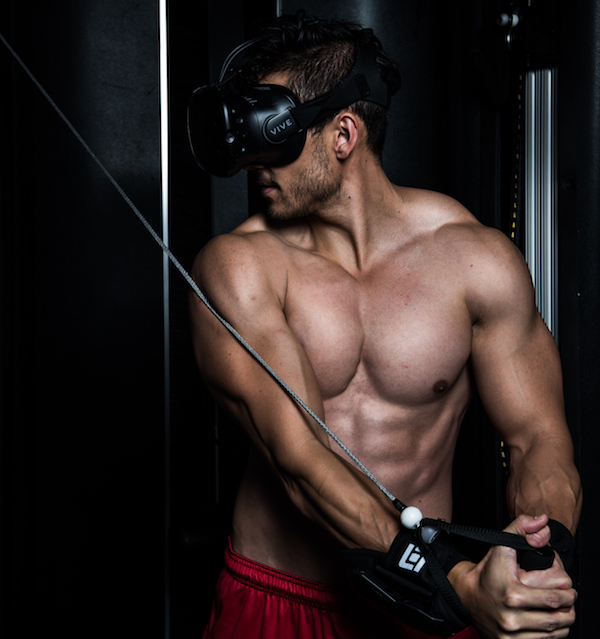
BBVR aims to have their first full-fledged VR gym in San Francisco, California, up and running in the fall of 2018. Image courtesy of Black Box VR.
AAC: How would you differentiate the design requirements for, say, a traditional gaming computer and the requirements for a VR gaming computer?
RR: GPU performance is crucial, as most high-end VR games and experiences are 90 fps and above currently. As the requirements for faster frame rates are on the rise, this will only become more prevalent. A typical gaming laptop can perform very well at 60 fps, so in the frame rate increase is definitely energy intensive. We are hearing a lot about the progression of VR-ready PCs on the market, better/bigger GPUs, faster clock speeds on the CPUs, better cooling systems, etc. Manufacturers are aiming to optimize these machines for VR.
AAC: What other innovative applications do you see VR being used for as these technologies progress?
RR: The sky's the limit! With a combination of AR/MR/VR technologies, there are endless possibilities within education, entertainment, fitness/sports, manufacturing, design—you name it.
As the technology becomes more commonplace, the more developers and manufacturers will get in the game, bringing in unique talents and viewpoints. Though VR has been around for quite some time, it seems to be ramping up to its always-promised potential. There are still a few major hurdles to clear, but things are looking positive as more investment and opportunities arise.
As an engineer and designer, I am especially excited for the advancements within parametric CAD software. I have always envisioned having the ability to interact with the designs, being able to touch and feel the model as you evaluate in real-scale… so cool!
Thank you so much for your time, Rich!
Check out Black Box VR if you'd like more information on their gamifying initiatives and updates on upcoming releases.






No comments:
Post a Comment